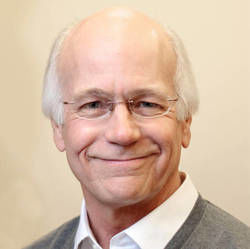Calls Now Open
2024 ADDF-Harrington + 2025 Harrington Scholar-Innovator Programs

Cardiovascular, Neuroscience, Rare/Orphan
Targeting Mitochondria to Treat Charcot Marie Tooth and Other Neurodegenerative Disorders
2019 Harrington Scholar-Innovator
Mitochondria generate the majority of a cell's energy and are vital to survival. Yet, maintaining a healthy mitochondrial population is challenging in peripheral nerves, which can be up to three feet in length (e.g. the sciatic nerves in our legs), requiring mitochondria to be actively transported from the spine to the nerve endings in your feet.
Mitochondria have genomes that are exchanged through mitochondrial fusion, which is mediated by proteins called mitofusins. 'Mitochondria are mobile and can divide or fuse forming a more continuous network," Dr. Dorn says. "The job of mitofusins is to pull the mitochondria close together in a very synchronized process."
Genetic mutations of one mitofusin protein, mitofusin 2, cause a neurodegenerative condition called Charcot-Marie-Tooth disease, type 2A (CMT2A). There is no disease-altering therapy for CMT2A, which affects around 23,000 people in US, typically in late childhood, with degeneration of nerves that leads to muscle atrophy in the arms and legs.
"With CMT2A, mutant mitofusins are inactive," Dr. Dorn says. "Based on an intuitive understanding of what was happening with protein conformation, we were able to develop a compound that triggers mitofusin activation, evoking striking improvement in mitochondrial shape, fitness and motility in CMT2A patient neurons and rescuing neuromuscular degeneration in a CMT2A mouse."
With help from the Harrington Discovery Institute, Dr. Dorn hopes to provide those afflicted with CMT2A with far more effective medical management than physical therapy, walkers, braces and wheelchairs.
“With assistance from our Harrington Discovery Institute development team we now have a compound that looks like a drug."
Source: Article from 2019-20 Annual Publication.